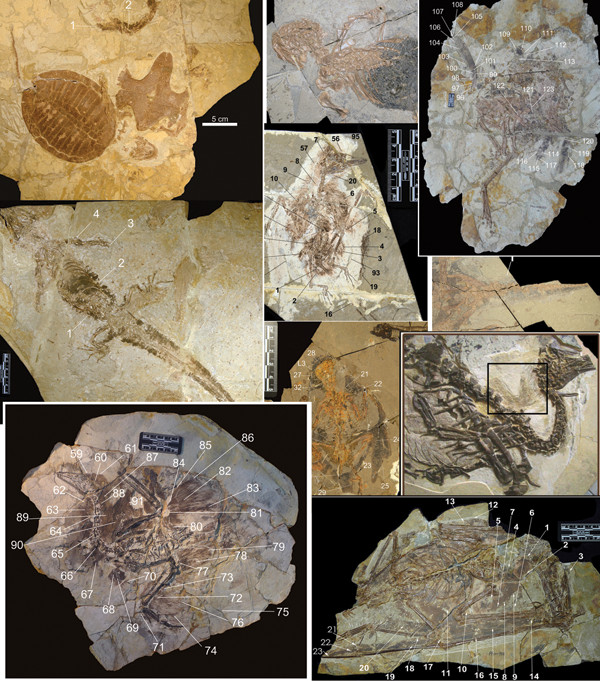
by Mary Caperton Morton Monday, June 23, 2014

Images of some of the 13 Jurassic and Cretacous pterosaur, dinosaur, turtle, bird and lizard fossils sampled for evidence of preserved melanosomes. Credit: Clarke et al., Nature, 2014.
Melanosomes are melanin-producing cells found in the feathers of all modern birds as well as a range of other animals. To study the origins of colorful feathers, lead author Julia Clarke of the University of Texas at Austin and colleagues compared melanosomes in 181 living species with those preserved in 13 different fossils. They found that maniraptors — the lineage of dinosaurs that evolved into birds — seemed to have undergone a rapid diversification of melanosome shapes and sizes not long after the origin of advanced pinnate feathers.
Such diversity may have resulted from stronger sexual selection for color, but it may also indicate a shift in maniraptor physiology: Melanosomes do more than enliven coloration, they are also associated with metabolic processes, thermoregulation, and reproductive cycles, the team wrote.
“Although further investigation is clearly required, the change in melanin-based color and the origin of within-feather melanin-based coloration in Maniraptora may indicate when a key shift in dinosaurian physiology occurred before the origin of flight,” Clarke and colleagues reported.
© 2008-2021. All rights reserved. Any copying, redistribution or retransmission of any of the contents of this service without the expressed written permission of the American Geosciences Institute is expressly prohibited. Click here for all copyright requests.